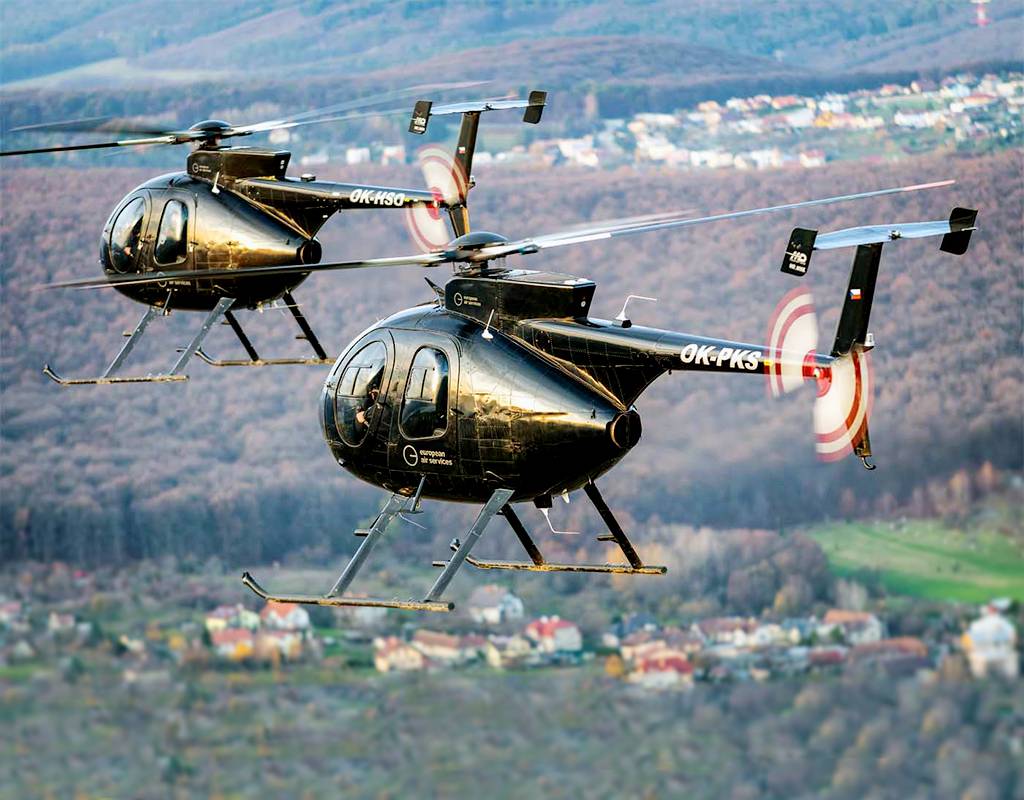
As night fell over the Ore mountains in Eastern Europe, two Sikorsky UH-60 Black Hawk helicopters lifted off from a small airport on the Slovak-Hungarian border and slipped into the fading winter twilight. Far from being a secret operation or a movie scene, this was a routine training flight; the student aircrew would soon return home to regions in the world where the toehold of security is at its most tenuous. Their instructors, no strangers to this type of nocturnal navigation, are all U.S. military veterans. But while the names of their former units would be recognizable to many, the company for which they fly as civilians is less familiar.
Advertisement
Critical to the development of this unusual arrangement was the 2017 sale of the former Bristow Academy in Titusville, Florida, as it became United States Aviation Training Solutions (USATS). In early 2019, this operation was quietly acquired by International Defense & Aerospace Group (IDAG), a little-known company that was itself only three years old at the time. With personnel hailing from some of the most elite aviation units in the world, they had the experience necessary to transplant the USATS program into something that meets the growing global demand for a quality of military aviation expertise to match that of the systems and aircraft proliferating around the world’s trouble-spots.
While high quality was always IDAG’s aim, training was not its only focus, as company president and former U.S. Army pilot Bob Caldwell explained. “IDAG came about in 2014 from a desire to provide high quality contracted logistics support, flight training, maintenance, sales and support to emerging, evolving and established militaries around the world,” he said.
“My business partner and I had worked together for many years in government service. We realized that there was a need for a company that was nimble, quick to react and could tailor an operation to the specific needs of the customer while maintaining a low profile. That was the mission statement that became IDAG. We started by acquiring companies and hiring people that fit the mold of discipline, attitude and dedication to excellence.”
Building a better mousetrap
The initial growth of the company was cautious but continuous. “Piece by piece, we’ve built a company in a way that is logical and meets our demand for quality,” said Caldwell. “We knew we could build a better mousetrap.”
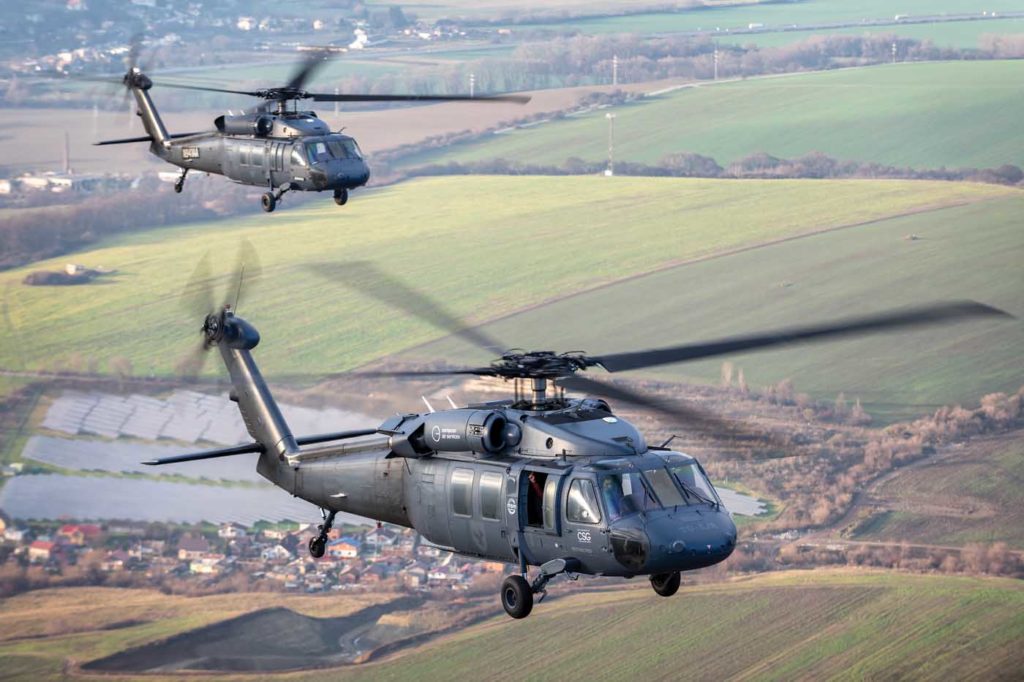
The full quote from Ralph Waldo Emerson is, “Build a better mousetrap and the world will beat a path to your door.” Along with his business partner in Central Europe, Caldwell soon found that to be true. IDAG became a sales representative for MD Helicopters, a relationship formed from Caldwell’s previous experience with the company and one that has continued ever since.
The acquisition of a flying school in Eastern Europe followed. There was a further opportunity to expand in 2016, when several surplus MD 902 Explorers came on the market, along with a simultaneous requirement from the Hungarian Police.
IDAG arranged the procurement of several aircraft from an operator in Europe, and others from surplus as the U.K.’s National Police Air Services (NPAS) was consolidated. As a result, the aircraft all had a slightly different configuration and the first challenge was to homogenize Hungary’s new fleet.
“There was no continuity and no consistency in the cockpits or mission equipment of the acquired aircraft,” said Caldwell. “We were the first to certify a Universal glass cockpit in the MD 902 and we did that ourselves.”

The glass cockpit was installed not in an effort to provide any specific instrument flight rules (IFR) upgrade, but rather to future-proof the aircraft and reduce the pilot’s workload. “The aircraft is a dream to fly,” Caldwell explained. “And with the existing autopilot and the Universal cockpit, it makes it safer and brings it up to a modern standard.” The aircraft were modified in partnership with Specialist Air Services in the U.K. New paint, a FLIR Systems camera and a Spectrolab Nightsun searchlight completed the specification before the aircraft were given fresh annual inspections. “The aircraft were rolled back to a practically new condition,” he added.
To service the support requirements of the Hungarian Police Air Service (HPAS), a new company was formed. Aero IDAG moved into a hangar opposite HPAS at Budapest Airport. As well as having the contract to supply spare parts, Aero IDAG is Hungarian Military Aviation Authority-approved, European Aviation Safety Agency (EASA) part 145 certified and an MD Service Center.
“We service the aircraft and provide spares and technical advice, and we handle overflow maintenance for the police,” said Caldwell.
The MD 902s replaced an aging fleet of Eastern-bloc Mi-2 helicopters that, while typically rugged, were showing their age. The change in aircraft complexity and engineering philosophy was a challenge for IDAG to address. “It was a learning curve,” said Caldwell. “In my estimation, the MD 902 is the best light helicopter in the world and, even though the design is 20 years old, it is a very sophisticated platform, so we hired several of the most experienced MD 902 maintenance people in the world to work on the aircraft.”

IDAG also supports HPAS MD 500s, as well as having factory-trained mechanics for the Airbus Helicopters EC135 and EC145, and Bell 206. “The customer trusts us and, with our direct line to MD Helicopters, we can act as a conduit between them because we want to provide the customer with the best possible solution,” said Caldwell.
With the government approvals, EASA certification and the wealth of experience on-site, IDAG also has the capability overhead to serve other clients, whether that is the Hungarian government or commercial operators in the wider region. Such an operation, just over the border in Slovakia, is one with which IDAG is already very familiar.
A Slovakian solution
Before IDAG had even come into being, former Slovak Air Force instructor and combat veteran Peter Korba had designs to establish a military helicopter training academy in the country. With its Mi-2s retired, Slovakia was left only with Mil Mi-24 and Mi-17s — large helicopters completely unsuitable for basic training. Having commanded a training squadron himself while in the service, Korba was ideally placed to provide a solution and established Heli Company in 2004. The company won its first contract to train Slovak military pilots in the same year.
Training began using Schweizer S300s and a basic syllabus. “We started with basic training, a little more than PPL [private pilot license] standard,” he explained. “The POI [program of instruction] was set according to the air force requirement.”

Within a few years, the company had realized that, with its expertise, it could offer more advanced training, specifically focusing on emergency drills such as autorotative landing. “We also expanded what it was possible for us to deliver to the air force,” said Korba. “Step by step, we began training to CPL [commercial pilot license] standard and then more advanced military training.”
Heli Company had designed a pretty good mousetrap itself, and in 2015 a path was beaten to its door by European Air Services. Based in the Czech Republic, they proposed an international training center for military helicopter crews in Slovakia. While commercial training would continue, the new academy would target military training specifically. “It was a big challenge, but a great opportunity to bring interesting work here,” explained Korba. “We remain open for civilian training, but our focus is on military training and we have been training military students from all over the world for more than two years now.”
The acquisition of the majority share of Heli Company by European Air Services brought Korba into the orbit of IDAG. “My partner in IDAG was also the founding partner of European Air Services,” said Caldwell. While each company is distinct in its organization, Caldwell says they share common roots. “We have grown the family so that every one of the companies under this umbrella specializes in a different discipline and is the best at what they do. We complement each other.”
IDAG’s purchase of USATS added the final piece of the puzzle to provide what Caldwell calls a 100-percent solution. “We were able to take that core model, the years of experience and the lessons learned, and transplant it to other places in the world,” he said. “The partner companies had a concept for a military flight training center of excellence, and with Heli Company we can cover every aspect of flight and aircraft maintenance training.”
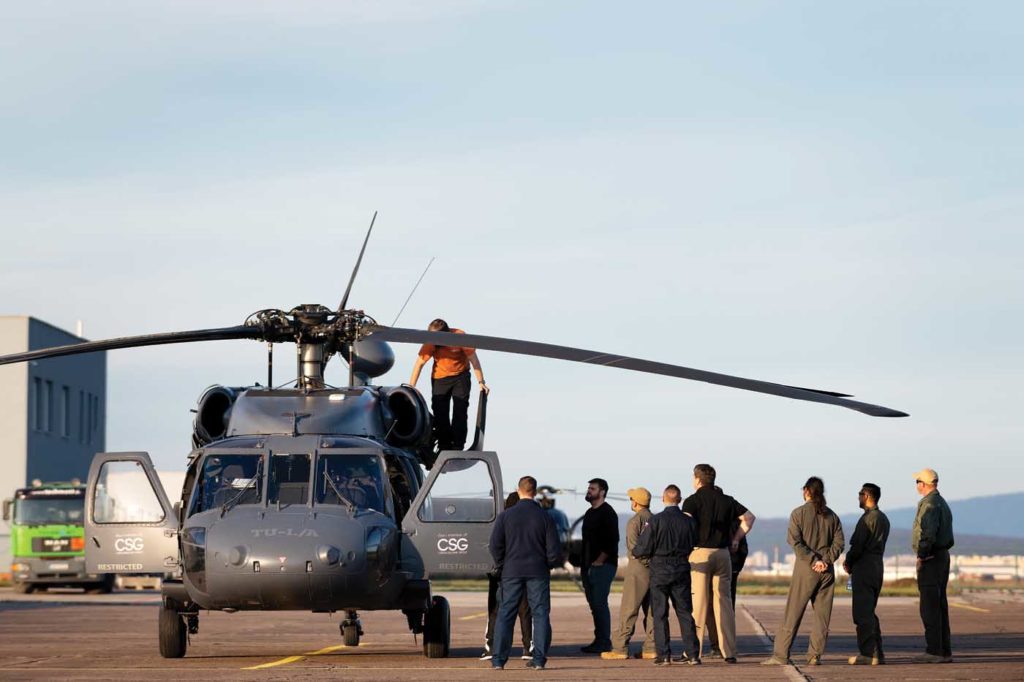
With the human and financial capital having finally coalesced in Slovakia, it became the natural venue for the proposed training facility. The newly minted Slovak Training Academy (STA) was established, and while commercial training is available, the focus is firmly on military training. The customers are not the students themselves, but rather their home nations, which desire a well-developed aviation capability but lack the collective experience necessary to train their personnel from scratch. The training is impressive in both its breadth and scope, most notably an integrated end-to-end program designed to produce combat-ready crews qualified on their front-line type.
Caldwell explained that students for this program arrive as “penguins.”
“We give them a flight suit and they might have a big watch and Ray Bans, [so] they look like they can fly, but they can’t yet. By the time they leave our school, they’ll be eagles and they really can fly.”
Students must first pass initial entry rotary-wing (IERW) training, as Korba explained. “The S300 is used for basic training before progressing to the MD 500, and this is the perfect combination of types for effective training.”
Penguins progress
Having learned the basics and experienced their first turbine type, the penguins’ wings have developed enough to progress to their selected type. “We have a group who started on the S300 and are now finishing on the UH-60,” said Korba. “We also train MD 530 advanced tactics and Mi-17 AQC [aircraft qualification course] here.”
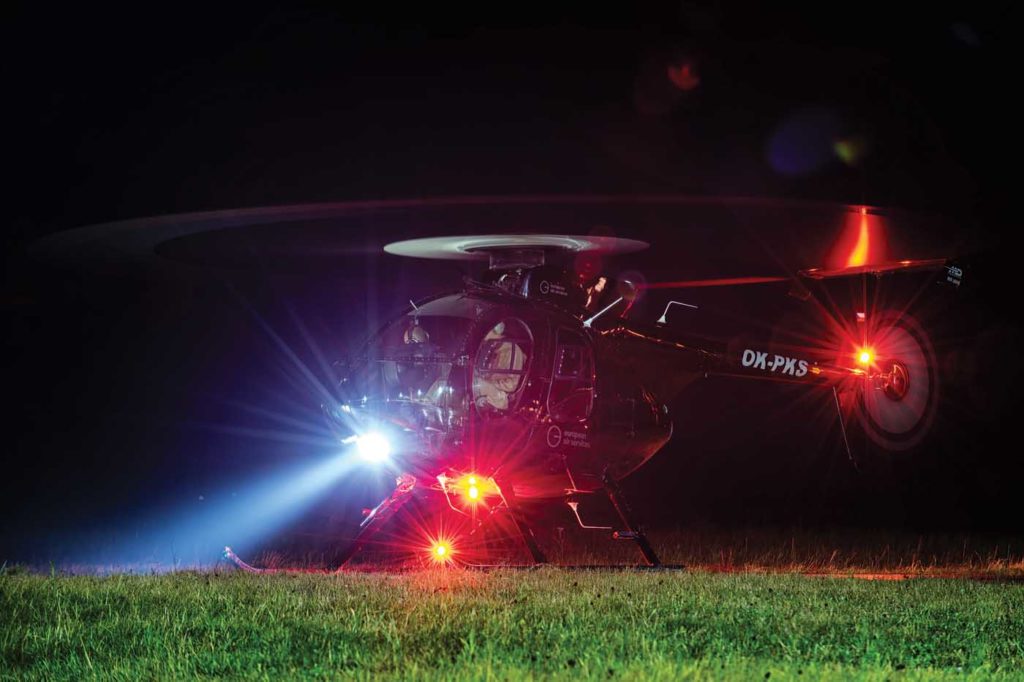
The pace of this progression shouldn’t be underestimated, particularly since not only are the students’ first languages not English, but their cultural references are likely to be very different and educational standards varied. While this has no bearing on their potential, it does present a hurdle for the instructors, as IDAG’s chief UH-60 flight instructor Eddie Rodriguez explained. “Heli Company has done an outstanding job teaching them basic maneuvers and they hand-fly the aircraft very well, but the language barrier can still be a challenge.”
A former U.S. Army warrant officer with a variety of combat and training roles in his resumé, Rodriguez is also the aircraft qualification training program manager, responsible for recruiting into the IDAG instructor cadre. His top priority is getting the right people into a job that doesn’t suit everybody. “Pilots must have served as instructors and have deployed experience,” he explained. “However, part of the job specification is personality. Of course, we want good people with good experience and work ethic, but their personality must fit, too.”
Experience teaching foreign students is preferred, and patience is also likely to be high on Rodriguez’s list of desirable qualities, as initially it can take an hour to complete a pre-flight and another just to start the aircraft. The training flight itself can last between two-and-a-half and three hours, which is a tremendous amount of time for the students to maintain concentration. At this pace, however, an IERW graduate will become a UH-60 pilot in just 12 weeks.
Learning to fly complex helicopters is stressful enough, doing so in a limited time makes it more so. A long way from homes that might be in perilously unstable parts of the world, the students at STA deserve the utmost admiration.
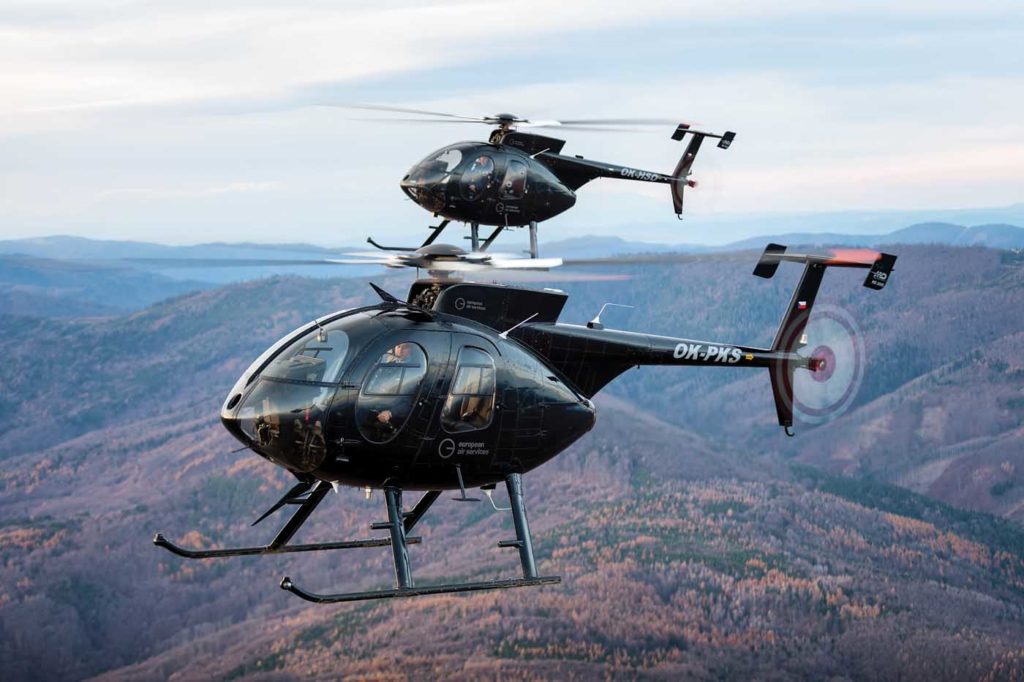
Advertisement
A team of professional mentors, all of whom are former combat pilots or maintainers, ensure that the students are comfortable and all their needs are met. “Part of their job is to go back to the barracks and talk to the students from time to time,” explained Rodriguez. “If the students are having a hard time, they sometimes don’t want to talk to the instructors. They speak to our mentors more freely, but the feedback so far has been good.”
For Caldwell, finally graduating his students as “eagles” is a source of tremendous pride. “They’ve still got the flight suit and maybe a bigger watch now, but now they really can fly,” he said. “It’s a tremendous accomplishment and you can see it in their faces because they know that nothing was given — they’ve earned it. We demand perfection and we only settle for excellence.”
Students entering the UH-60 courses will soon benefit from the addition of two more aircraft due to arrive in early 2020, bringing the fleet to six flyable machines, with two for maintenance training. Client states are also likely to benefit from the recent acquisition of several MD 530F helicopters, received in mid-2019.
“I have a long history with MD and a love of their product line,” said Caldwell. “The 530 is used specifically for NVG [night vision goggle] and tactics training, and we have significant interest in it from new customers.”
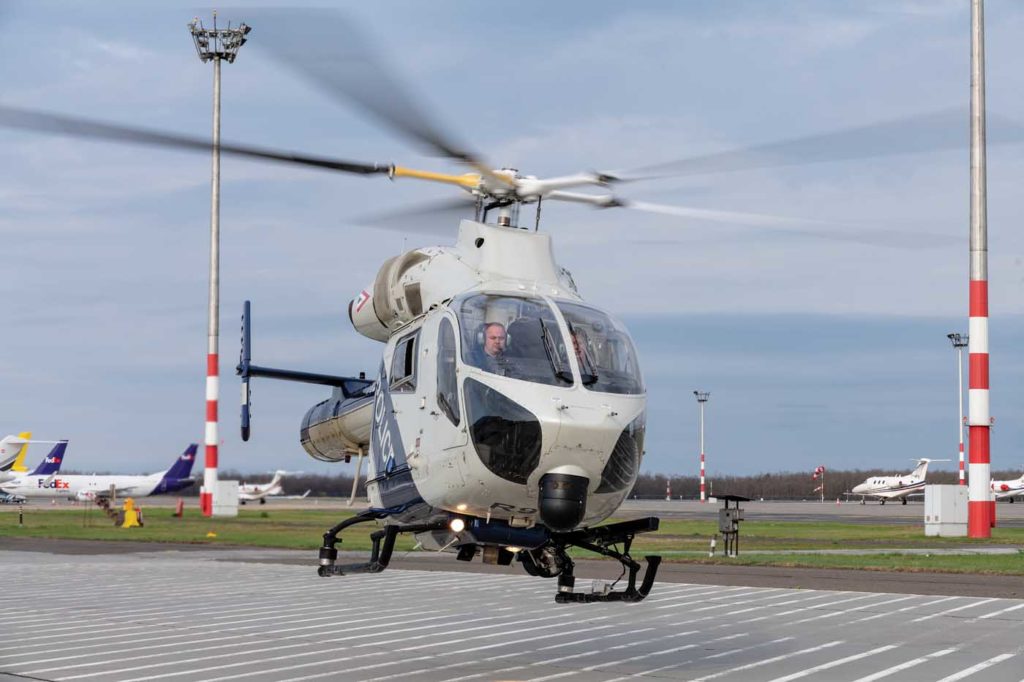
IDAG’s MD 530Fs have been specified precisely to garner such interest. It is no coincidence that the cockpit and avionics are identical to that of MD’s armed scout/attack helicopter, the Cayuse Warrior. The fit and function is precisely replicated in the IDAG aircraft, down to the cyclic stick-tops and even the seats. “It’s the first of its kind,” said Caldwell, explaining the design logic. “The Cayuse Warrior is a fantastic scout and light-attack aircraft. MD has had great success with it and we want to be along for the ride.”
Shared rewards
Regardless of the success of its preferred aircraft manufacturer, IDAG has created the conditions not only for its own success, but for that of its partner companies; achieving through collaboration and partnership what would have been almost impossible with competition and conflict.
While their early successes were doubtless the result of the same ethos, their cooperative approach is most epitomized in the coalition of expertise that formed the Slovak Training Academy. Such talent does not come together by chance. The staggering complexities of delivering non-commercial military training — in privately owned and state-registered aircraft with a civilian staff — are not resolved without hard work, intimate industry knowledge and clear-minded determination.
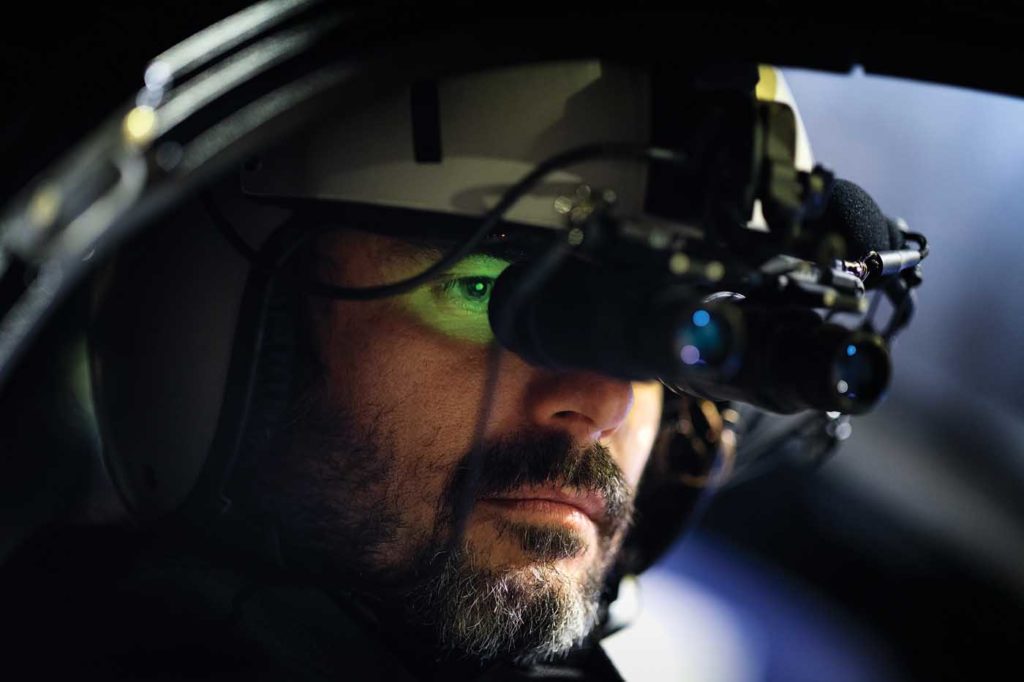
The direct beneficiaries of these qualities, in Slovakia at least, are the penguins who are gradually becoming eagles. The sense of reward that the newly minted pilots and maintenance technicians feel as they graduate is echoed by the company management, maintenance and flight instructors who have provided the conditions necessary for their success. With hundreds of years of collective combat aviation experience and hand-picked for their temperament, there can be few better qualified to prepare pilots and maintainers for the rigor that they will likely face when they return home.
“We have some of the best people in the world,” Caldwell said of the instructors. “We are calculated, methodical, patient and persistent. We will not compromise when it comes to the quality of our personnel or equipment.”
This deliberate approach is perhaps the key strength of IDAG and its partners. IDAG is working to be among the best specialized aviation solutions providers in the world. If it continues on the track it appears to be on, it will be able to take its pick of quality personnel.




